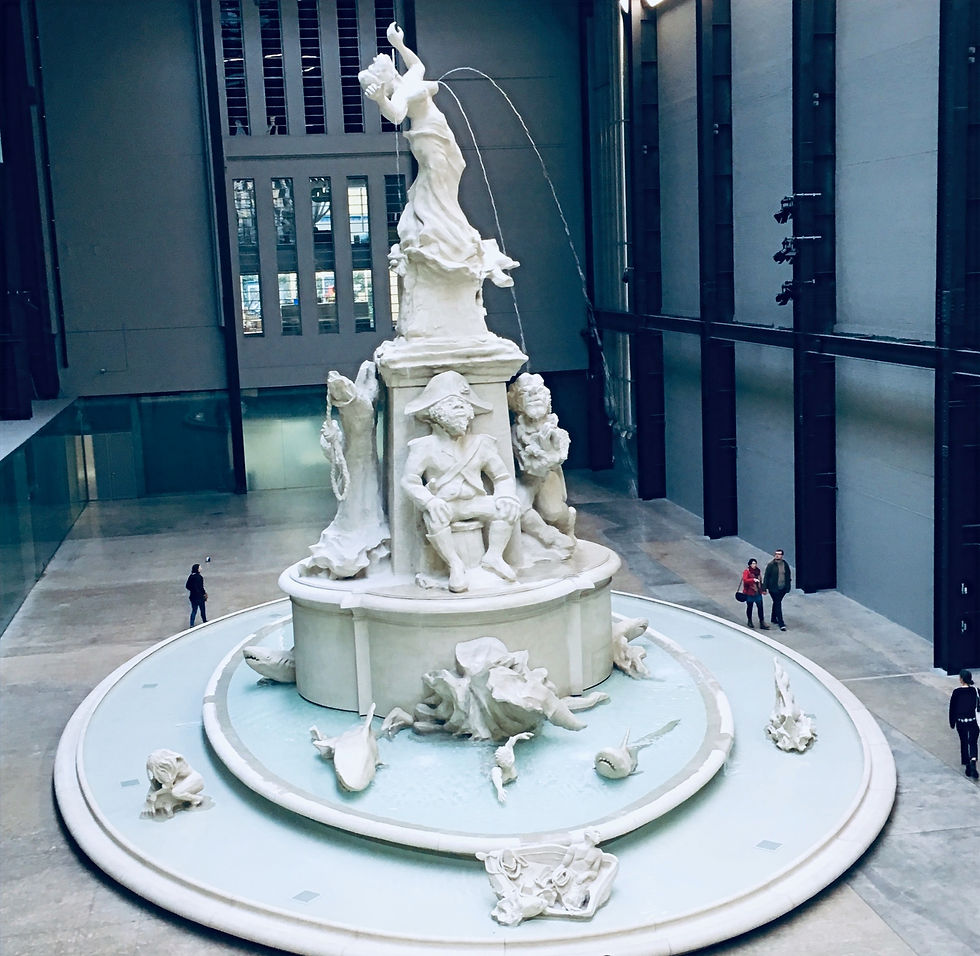
After months of closure during lockdown – museums and galleries have reopened, under a ‘new normal’ regime of reduced opening hours, compulsory advance bookings and masks. Adieu, spontaneity. Hello sanitising stations! But these are unprecedented times – and I am grateful that, at last, we are able to visit exhibitions and I got to see Dóra Maurer. The exhibition is on level 4 and the one-way system you follow means you get to see the permanent exhibition. Bonus!

And guess who else is on level 4? None other than the feminist activist artists, Guerrilla Girls. As an activist myself – I always appreciate some added ‘umph’ and a bit of a reality check to the over privileged mainstream art world. Formed in New York in the mid-1980’s, the group wear gorilla masks in public to keep the focus on their work and message, rather than on themselves. They aim to expose the inequity and double standards of museums and galleries - especially vis-à-vis women, black, working class or disabled artists – in their own words: ‘we believe in an intersectional feminism that fights discrimination and support human rights for all people and all genders.’[i]
While the facts on the art work displayed are now slightly out of date, Guerrilla Girls’ messaging continues to be relevant. Feminist groups like theirs play a pivotal role in exposing gender misrepresentation and the male gaze – as well as wider discrimination present in every aspect of society. They have made it less acceptable for museums and galleries to continue with a business as usual approach that excludes the majority of artists.
It also begs the question: Who gets to make art? – explored by Lola Olufemi in her brilliant book Feminism, Interrupted, and in which she rightly challenges feminists to ‘dismantle the systems of poverty, racism, incarceration, impoverishment that leave so many women unable to fulfil their creative potential.’[ii]

In contrast, Dóra Maurer, who worked as an artist and professor at the Faculty of Fine Arts in Budapest, refuses to consider her art as political. Understandable vis-à-vis the context in which she lived and worked - Hungary under Soviet rule when everything was über-political. Yet, she was part of an independent community of artists, who refused to follow the cultural policy of the socialist regime, organised exhibitions in their own apartments and published underground journals.
Still, political or not – Dóra Maurer’s work is astounding and truly experimental. She explores different techniques and processes - admitting she is ‘not as interested in the finished work as in the way it comes about’. She is a surprise at every corner. Other the Moving Images in Room 1, which made me feel a bit queasy – though that could, of course, be attributed to the lack of oxygen from wearing a mask – I really enjoyed some of the photography – Seven Twists is superb – and the combination of shapes and colours – particularly of her later work. Both in painting and collages, her lines are generous and colours rich. Some of her work - the mathematical precision and geometric compositions, reminded me a little of Bridget Riley. Extended until 24 January 2021.
And finally – a cheeky ‘clin d’oeil’ to Andy Warhol. The exhibition is magnificent - it reminded me how much I actually like his work - and, it’s packed with feminist icons - Marilyn Monroe, Dolly Parton, Debbie Harry. Of course, his work is not without controversy – especially five decades later, when the world has wised up to the male gaze and gender politics. This is so clearly illustrated in his stunning Ladies and Gentlemen series, which depicts unnamed drags queens and trans women of colour – at a time when they were totally underrepresented in mainstream art. Its composition is as bold as its content. It includes LGBTIQ+ activist Marsha P Johnson, who was present at the Stonewall Uprising that ushered in the gay and trans rights movements, and Wilhemina Ross. Both performed at the ‘Hot Peaches’ drag theatre company in the 1970’s. Then, of course, there is the attack by radical feminist Valerie Solonas, author of the SCUM Manifesto, that very nearly killed him. Revered by some, vilified by others, Solonas’ attack divided the feminist movement - a bit like Warhol himself, really! But whether you like him or not, it is quite baffling to see how current his work remains – an artist for our troubled and gender fluid times. Extended until 15 November 2020.

Hurry, Hurry to see Kara Walker’s breath takingly extraordinary Fons Americanus. No matter how many times I see it – it moves me to the core.
Extended until 08 November 2020.
Practical info
Tate Modern Gallery
Bankside, London SE1 9TG
Opening Times
Monday to Sunday 10.00–18.00 - please note, no lates on Friday and Saturday.
By tube - either from Southwark station (Jubilee line), Blackfriars (District and Circle line) or St Paul’s (Central line)
Bus routes 45, 63, 100, 344, 381
The Tate Boat runs every 30 minutes between Tate Britain (Millbank Pier) and Tate Modern (Bankside Pier)
For more details and information about accessibility check: www.tate.org.uk/visit/tate-modern
References and links: [i] www.guerrillagirls.com [ii] Lola Olufemi, Feminism, Interupted, Pluto Press.






Comments